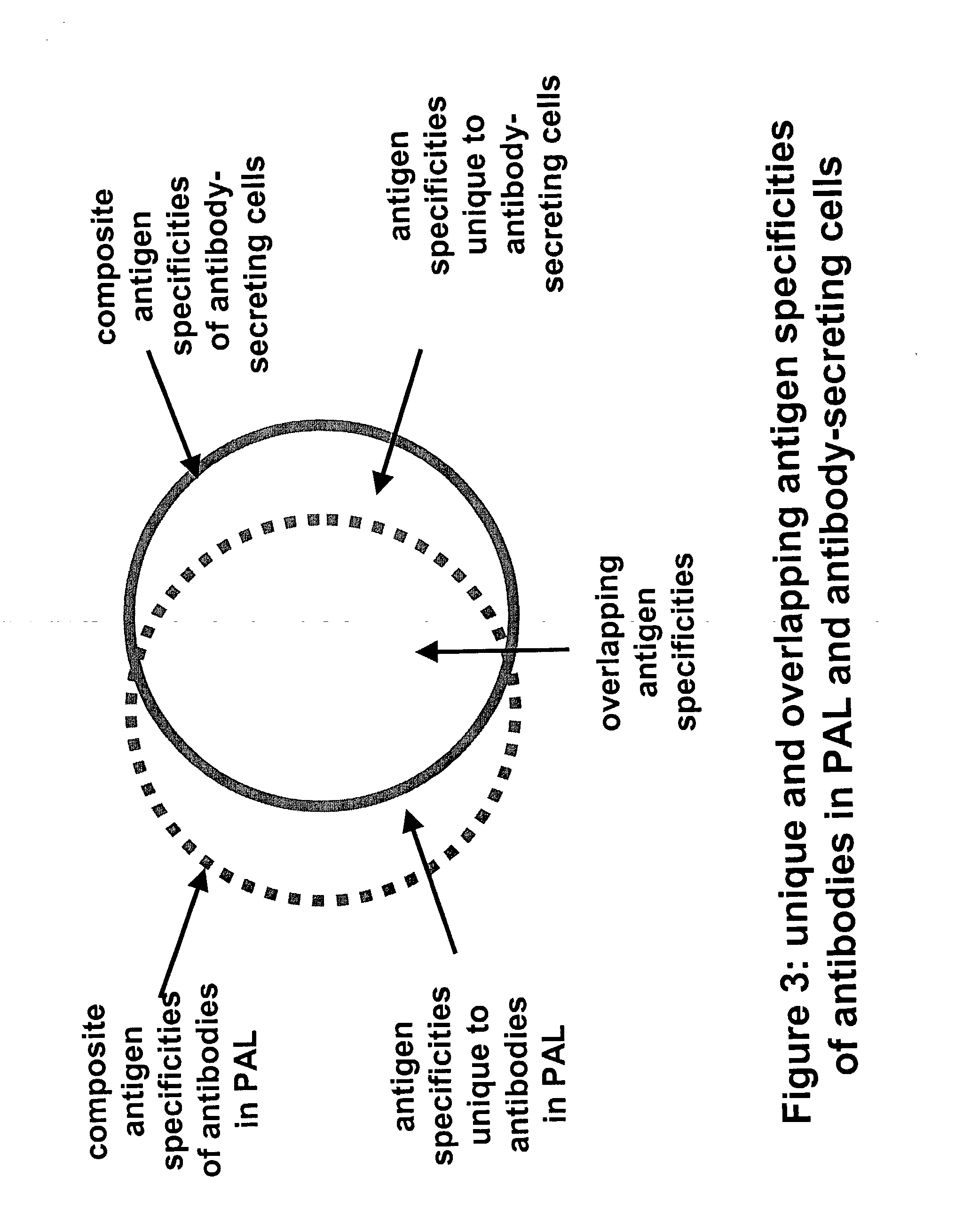Methods for screening antibody-producing cells on heterogeneous antigen substrates
a heterogeneous antigen and antibody-producing cell technology, applied in the field of monoclonal antibodies and phage antibodies, can solve the problems of significant rate-limiting steps in high-throughput screening efforts, complex screening process, and high cost, and achieve the effect of reducing complexity and time and high throughpu
- Summary
- Abstract
- Description
- Claims
- Application Information
AI Technical Summary
Benefits of technology
Problems solved by technology
Method used
Image
Examples
example 1
Modification of Hybridoma Cells for Secreted Antibody Capture
[0074] Hybridoma cells were cultured in bulk in HAT selection medium for several days after fusion of a drug sensitive mouse myeloma cell line with lymphoid cells from a mouse immunized with human prostate tumor cells. After collection of the viable hybridoma cells and washing them free of debris and spent medium by centrifugation, they were then reacted with a succinimidyl ester of biotin for approximately 30 minutes in an inert buffer of neutral or slightly alkaline pH to derivatize protein amino groups and generate the anchoring moiety. Following additional washing of the cells to remove unconjugated biotin, they were then reacted for approximately 30 minutes with streptavidin to generate the bridging moiety. Following further washing of the cells to remove excess free streptavidin, the capturing moiety was generated by reacting with a biotin-conjugated anti-mouse IgG-Fc antibody. The cells were then incubated at physi...
example 2
Alternate Modification of Hybridoma Cells for Secreted Antibody Capture
[0075] Hybridoma cells were obtained and manipulated in a manner similar to examplee 1, but the anchoring moiety consisted of protein amino groups derivatized with a succinimidy ester of fluorescein, the bridging moiety was a polymeric mouse IgA anti-fluorescein antibody, and the capturing moiety was a fluorescein conjugated anti-mouse IgG-Fc antibody, respectively.
example 3
Modification of Normal AFC for Capture of Secreted Antibody
[0076] Spleen and lymph node cells were harvested from mice 5 days after the last of a series of immunizations. A fraction of large-sized cells substantially enriched in differentiated B cells or plasmacytic cells (i.e., AFC) was obtained by velocity sedimentation through a low density medium at unit gravity, or through a density gradient at low centrifugal force (In: Mishell and Shiigi, Selected Methods in Cellular Immunology (1980), W.H. Freeman and Company, pp. 186-96). Alternatively, the enriched fraction was obtained by flow cytometry sorting and gating on cells with high forward light scatter. The cells were then treated in the same manner as in the second example to generate the anchoring, bridging and capturing moieties.
B. Modifications to the Antigen Substrate.
[0077] The methods provide for the production of renewable libraries comprised of soluble polyclonal or oligoclonal antibody mixtures with multiple specif...
PUM
| Property | Measurement | Unit |
|---|---|---|
| size | aaaaa | aaaaa |
| diameter | aaaaa | aaaaa |
| incubation time | aaaaa | aaaaa |
Abstract
Description
Claims
Application Information
 Login to View More
Login to View More - R&D
- Intellectual Property
- Life Sciences
- Materials
- Tech Scout
- Unparalleled Data Quality
- Higher Quality Content
- 60% Fewer Hallucinations
Browse by: Latest US Patents, China's latest patents, Technical Efficacy Thesaurus, Application Domain, Technology Topic, Popular Technical Reports.
© 2025 PatSnap. All rights reserved.Legal|Privacy policy|Modern Slavery Act Transparency Statement|Sitemap|About US| Contact US: help@patsnap.com



